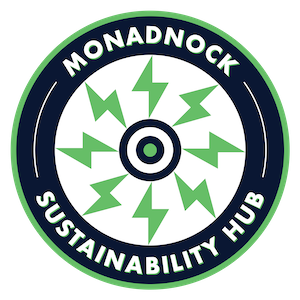The Monadnock Region is a fast-charging desert – here’s why that needs to change
2018 was a game-changer for electric vehicles (EVs) in the United States. Over 361,000 electric vehicles were sold, 81% more than in 2017. This represents the highest growth rate in the industry since 2013. Of the EVs sold in 2018, pure EVs (also called battery electric vehicles, or BEVs) represented 66% of sales. The Tesla Model 3 now ranks among the 5 best selling cars in the US market, and there are several new mass-market EVs available with over 200 miles of electric range.
This surge in interest in EVs is a good omen for those of us concerned about climate change; here in the northeast U.S., the transportation sector is one of the largest contributors to greenhouse gas emissions. In Keene, a 2015 greenhouse gas emissions inventory concluded that emissions from on-road vehicles accounted for 46% of the community’s emissions. This is due, in part, to our region’s reliance on motorized vehicles to get around. We have very limited public transit options and on-demand ride services to speak of, and as a result, people are usually dependent on motor vehicles to meet the needs and wants of daily life. By transitioning to EVs (in combination with “greening” our electricity supply), we can make it much more possible to reduce emissions in the transportation sector.
However, to support the transition from internal combustion engine vehicles that rely on gasoline and diesel to electric vehicles, we need to invest in charging infrastructure. Currently, the Monadnock Region has a total of five EV charging stations, and they are all “Level 2” chargers (220 V/7.2 kW) that require approximately 7 hours to get 200 miles’ worth of charge. These types of chargers are great for people who live in the area and can charge their vehicle while at work or overnight at home. However, they are not so useful for visitors or people on longer day trips. Direct current (DC) fast chargers typically take about 60 minutes to charge up to 200 miles, and even faster chargers are currently in development that will be able to add about 180 miles of range in as little as 10 minutes. Unfortunately, the closest DC fast charger (480 V/50 kW), is located about 15 miles away in Brattleboro, VT.
This fast-charging “desert” has huge implications for tourism, which is a core economic driver in New Hampshire. In a March 2019 presentation to the NH Electric Vehicle Charging Stations Infrastructure Commission (established by Senate Bill 517), Eversource noted that fast charge sites are being installed in neighboring states at a higher volume than New Hampshire, in large part to enable EV tourism. Many of these states, including Connecticut, Massachusetts, Maine, New York, and Rhode Island, are key feeder markets for New Hampshire. In 2017 alone, there were 2.23 million visitor trips, $269 million in tax revenues, and 48,000 jobs from tourism. In order to retain the current inflow of commuters and tourists, Eversource estimates that, statewide, New Hampshire needs approximately 135 additional DC fast chargers. Currently, NH has 10 fast charge sites. The company is proposing to use funding from the Volkswagen settlement fund to help cover the cost of adding 12 new fast charging sites along major roads in the state, however only one site is proposed for the Monadnock Region.
If we want to see more tourism growth in our region, we need to get on board with EVs and find ways to invest in fast chargers in our corner of the state. Possible locations for fast chargers include local inns or bed and breakfasts, tourist destination areas, and areas immediately accessible from major travel corridors such as Route 9 and Route 101. The Monadnock Energy Hub, a consortium of Local Energy Committees under the auspices of Monadnock Sustainability Network, is currently working on an initiative called “Fast Charge Monadnock” to establish Electric Vehicle Supply Equipment (EVSE) Fast Charging Hubs in our region. An initial project is already in the works to install a fast charger in Keene. If you are interested in volunteering to be a part of this program, contact the HUB coordinator, Mary Ewell to learn more: MEHinNH@gmail.com.
Sources:
- Pyper, Julia. “US Electric Vehicle Sales Increased by 81% in 2018.” January 7, 2019. GreenTech Media. https://www.greentechmedia.com/articles/read/us-electric-vehicle-sales-increase-by-81-in-2018#gs.cxwpkt
- Irle, Roland. “USA Plug-in Sales for 2018 Full Year.” The Electric Vehicle World Sales Database. http://www.ev-volumes.com/country/usa/
- City of Keene, “2015 Greenhouse Gas Emissions Inventory.” https://ci.keene.nh.us/sites/default/files/Keene%20GHG%20Report%20FINAL_no%20draft%20mark.pdf
- Eversource. “New Hampshire EV Fast Charging Corridor Proposal” (presentation). March 2019. https://www.des.nh.gov/organization/divisions/air/tsb/tps/msp/documents/20190322-eversource-presentation.pdf
- U.S. Department of Energy, Office of Energy Efficiency and Renewable Energy. “Enabling Fast Charging: A Technology Gap Assessment” (report). October 2017. https://www.energy.gov/sites/prod/files/2017/10/f38/XFC%20Technology%20Gap%20Assessment%20Report_FINAL_10202017.pdf
